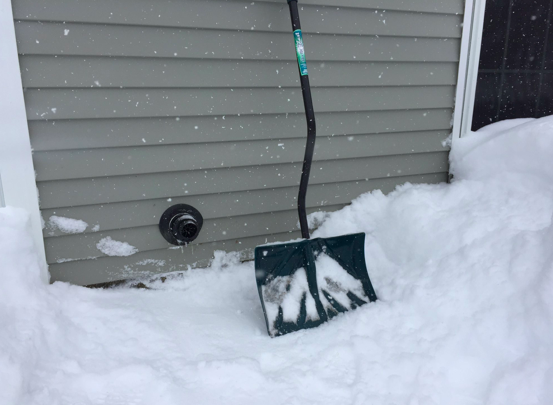With over 400 school cancellations and hundreds of businesses closing early (including non-essential employees at Vermont Gas), we knew #StormStella would be one for the record books – at last check, Vermonters witnessed the second biggest snowstorm in history over the last two days.
Large amounts of snow make for dangerous road conditions but we have an added concern: deep and blowing snow can bury sidewall appliance vents and gas meters. For those who may not know, sidewall vents are common in most new heating and water heating systems. They act as a breathing device for the heating system, taking in fresh air to mix with the fuel source (natural gas, propane, oil or wood) to produce heat, and then discharging the exhaust fumes outside.

If a vent is buried in the snow, not enough fresh air reaches the vent so it takes in a mixture of fresh air and exhaust fumes – causing the heating system to operate improperly and produce carbon monoxide. The carbon monoxide is then discharged with the exhaust through the vent and could seep back into the home – causing CO to build up in the home. There are various types of sidewall vents, below are pictures of two common configurations.
#StormStella certainly had our phones ringing with customers who said they smelled natural gas in their homes. In all, our crews responded to 34 calls over the past two days. We are happy to report that none of the calls was serious and thankfully every one of our customers is safe.
So what can you do to ensure your family is safe for the next storm? First, locate the vents and meters along the side of your home so you know where they are. Remove snow from the area around the vent, roughly 4 feet on all directions, so the vent is able to properly discharge the exhaust fumes and receive fresh air. During protracted storms like Stella, with high winds, this may need to be done several times. And very importantly, in addition to your smoke detectors, you should also have working carbon monoxide detectors installed in your home. Remember, CO is called the silent killer because it’s odorless, colorless and tasteless. And systems of CO exposure are similar to the flu and can often go undetected.
Learn more about natural gas safety.
